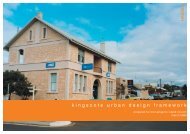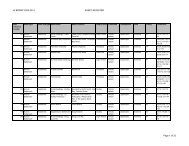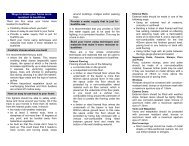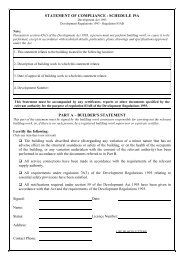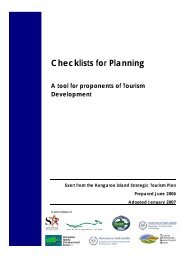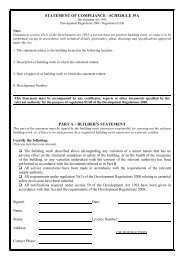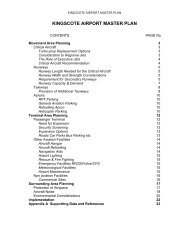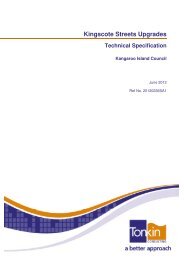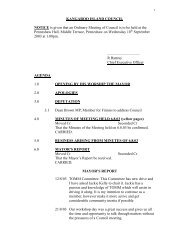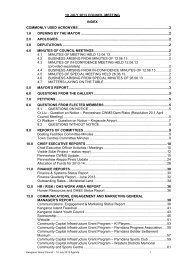Kingscote Airport Business Case Appendices - Kangaroo Island ...
Kingscote Airport Business Case Appendices - Kangaroo Island ...
Kingscote Airport Business Case Appendices - Kangaroo Island ...
- No tags were found...
You also want an ePaper? Increase the reach of your titles
YUMPU automatically turns print PDFs into web optimized ePapers that Google loves.
<strong>Kangaroo</strong> <strong>Island</strong> Futures Authority Draft Economic Impact of Agriculture and TourismUsing input-output analysis for estimation of economic impactsThe I-O model conceives the economy of the region as being divided up into a number ofsectors and this allows the analyst to trace expenditure flows. To illustrate this, consider theexample of a vineyard that, in the course of its operation, purchases goods and services fromother sectors. These goods and services would include fertiliser, chemicals, transport services,and, of course, labour. The direct employment created by the vineyard is regarded in themodel as an expenditure flow into the household sector, which is one of several non-industrialsectors recognised in the I-O model.Upon receiving expenditure by the vineyard, the other sectors in the regional economy engagein their own expenditures. For example, as a consequence of winning a contract for work withvineyard, a spraying contractor buys materials from its suppliers and labour from its ownemployees. Suppliers and employees in turn engage in further expenditure, and so on. Theseindirect and induced (or flow-on) effects6, as they are called, are part of the impact of thevineyard on the regional economy. They must be added to the direct effects (which areexpenditures made in immediate support of the vineyard itself) in order to arrive at a measureof the total impact of the vineyard.It may be thought that these flow-on effects (or impacts) go on indefinitely and that theiramount adds up without limit. The presence of leakages, however, prevents this fromoccurring. In the context of the impact on a regional economy, an important leakage isexpenditure on imports, that is, products or services that originate from outside the region,state or country (e.g. machinery).Thus, some of the expenditure by the vineyard (i.e. expenditure on imports to the region) islost to the regional economy. Consequently, the flow-on effects get smaller and smaller insuccessive expenditure rounds due to this and other leakages. Hence the total expenditurecreated in the regional economy is limited in amount, and so (in principle) it can be measured.Using I-O analysis for estimation of regional economic impacts requires a great deal ofinformation. The analyst needs to know the magnitude of various expenditures and wherethey occur. Also needed is information on how the sectors receiving this expenditure sharetheir expenditures among the various sectors from whom they buy, and so on, for the furtherexpenditure rounds.In applying the I-O model to economic impact analysis, the standard procedure is to determinethe direct or first-round expenditures only. No attempt is made to pursue such inquiries onexpenditure in subsequent rounds, not even, for example, to trace the effects in the regionaleconomy on household expenditures by vineyard employees on food, clothing, entertainment,and so on, as it is impracticable to measure these effects for an individual case, here thevineyard.The I-O model is instead based on a set of assumptions about constant and uniformproportions of expenditure. If households in general in the regional economy spend, forexample, 13.3 per cent of their income on food and non-alcoholic beverages, it is assumed that6A glossary of I-O terminology is provided in Appendix 3.e c o n s e a r c hPage| 51



